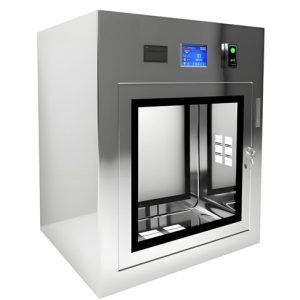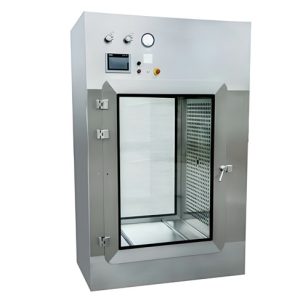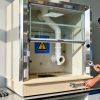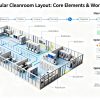Account
-
Safe payment options
We only work with the most secure payment systems.
-
Product return within 30 days
We do our very best to keep our customers happy.
No products in the cart.
You dont have any products in your cart yet, add a few products to experience this experience.
Add $500.00 to cart and get free shipping!
To see and take advantage of all discounted products.
Click HereUltimate Guide to Choosing a Modular Cleanroom Supplier — Specs, Costs, RFP & Top Vendors
Table of Contents
ToggleWhy Choose a Modular Cleanroom Supplier
Find the best Modular Cleanroom Supplier with this ultimate guide — compare specs, costs, RFP templates, validation requirements, and top vendors to streamline procurement and ensure regulatory compliance.
Modular cleanrooms offer significant advantages over traditional construction, including faster deployment, greater flexibility, and substantial cost savings. For aerospace applications requiring precise environmental control, modular aerospace cleanroom solutions provide unmatched scalability and compliance.
Cost Savings
20-30%
Reduction in CAPEX compared to traditional construction
Time Savings
40-70%
Faster deployment and installation
ROI Period
18-24 months
Typical return on investment timeframe
What Buyers Need to Know Before Contacting Suppliers
Proper preparation ensures you select the right modular aerospace cleanroom supplier for your specific requirements. Download our comprehensive checklist to evaluate your needs.
| Parameter | Details to Consider |
|---|---|
| ISO Class Requirements | ISO 14644-1 classification (ISO 5, 6, 7, or 8) |
| Footprint & Clear Height | Dimensions including ceiling height for aerospace components |
| Utilities Requirements | Electrical, compressed air, process gases, drainage |
| Vibration/ESD Control | Special requirements for sensitive aerospace instrumentation |
| Outgassing Limits | ASTM E595 compliance for aerospace applications |
Technical Specs Suppliers Must Provide
ISO Classification & Particle Counts
| ISO Class | Maximum Particles/m³ (≥0.5μm) | Typical Applications |
|---|---|---|
| ISO 5 | 3,520 | Critical aerospace assembly |
| ISO 6 | 35,200 | Aerospace component manufacturing |
| ISO 7 | 352,000 | Testing and quality control |
Air Changes Per Hour (ACH) Calculation
Proper ACH is critical for maintaining ISO classification in modular aerospace cleanroom environments:
Airflow (m³/s) = (Room Volume × ACH) / 3600
| ISO Class | Recommended ACH | Example Calculation |
|---|---|---|
| ISO 5 | 240-480 | 100m³ room: (100 × 360) / 3600 = 10 m³/s |
| ISO 7 | 30-70 | 100m³ room: (100 × 50) / 3600 = 1.39 m³/s |
Supplier Capabilities to Compare
| Capability | Minimum Requirement | Preferred Standard |
|---|---|---|
| Quality Certifications | ISO 9001 | AS9100 for aerospace |
| Project Experience | 5+ modular aerospace cleanroom projects | 10+ projects with aerospace clients |
| FAT/SAT Capability | Basic factory acceptance testing | Comprehensive FAT/SAT with documentation |
| BIM/CAD Support | 2D CAD drawings | Full 3D BIM models |
| CFD Analysis | Optional service | Standard inclusion in design phase |
Cost & Lead Time Expectations
| Project Scale | CAPEX Estimate | Installation Time | Energy Consumption |
|---|---|---|---|
| Small Module (50m²) | $150,000 – $250,000 | 4-6 weeks | 8-12 kW |
| Medium Facility (200m²) | $500,000 – $800,000 | 8-12 weeks | 25-40 kW |
| Large Aerospace (500m²+) | $1.2M – $2.5M | 16-24 weeks | 60-100 kW |
Lifecycle Cost Comparison
Modular aerospace cleanroom solutions typically show 15-25% lower total cost of ownership over 10 years compared to traditional construction, considering maintenance, energy efficiency, and reconfiguration flexibility.
Frequently Asked Questions
What are typical lead times for modular aerospace cleanroom delivery?
Standard modular aerospace cleanroom systems typically require 8-12 weeks from order to delivery, with installation adding 2-4 weeks depending on complexity and site preparation requirements.
Can modular cleanrooms achieve ISO Class 5 certification?
Yes, modern modular aerospace cleanroom systems can consistently achieve and maintain ISO Class 5 (Class 100) conditions when properly designed with appropriate filtration, airflow, and pressure differentials.
What maintenance is required for modular cleanrooms?
Regular maintenance includes HEPA/ULPA filter replacement (typically 3-5 years), airflow verification, pressure differential checks, and surface cleaning. Most suppliers offer comprehensive maintenance contracts.
How does modular construction compare to traditional cleanrooms for vibration control?
Modular aerospace cleanroom systems can be designed with specialized vibration isolation systems that often outperform traditional construction, with natural frequencies below 8 Hz achievable for sensitive instrumentation.
Ready to Start Your Modular Cleanroom Project?
Download our comprehensive RFP template and supplier evaluation checklist to begin your procurement process.
© 2023 Modular Cleanrooms Guide. All rights reserved.
For expert consultation on modular aerospace cleanroom solutions, contact our specialists today.









